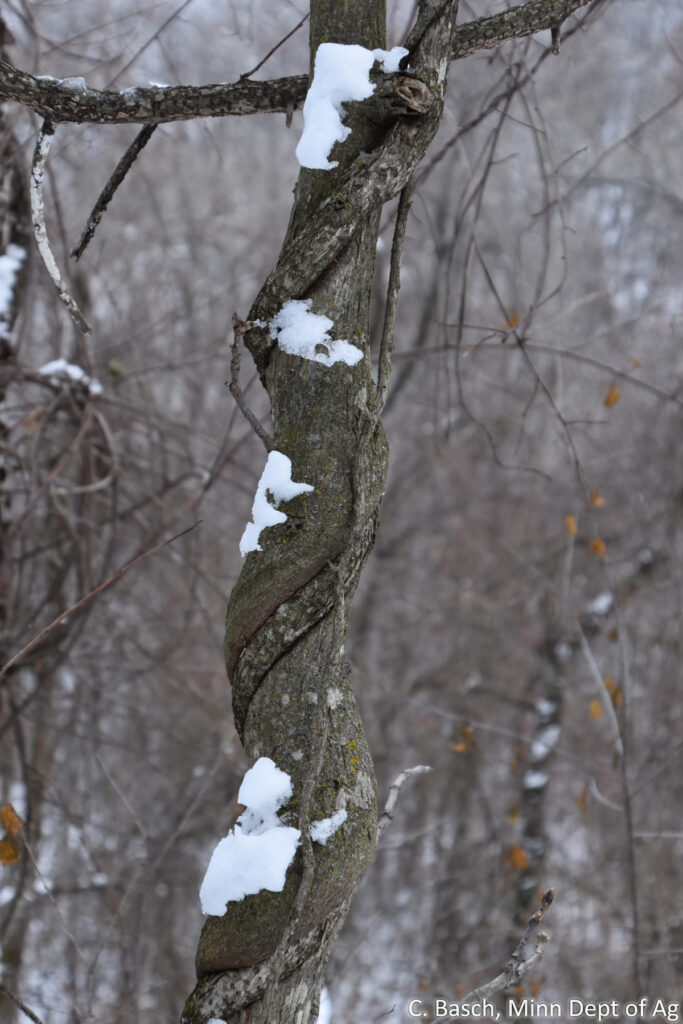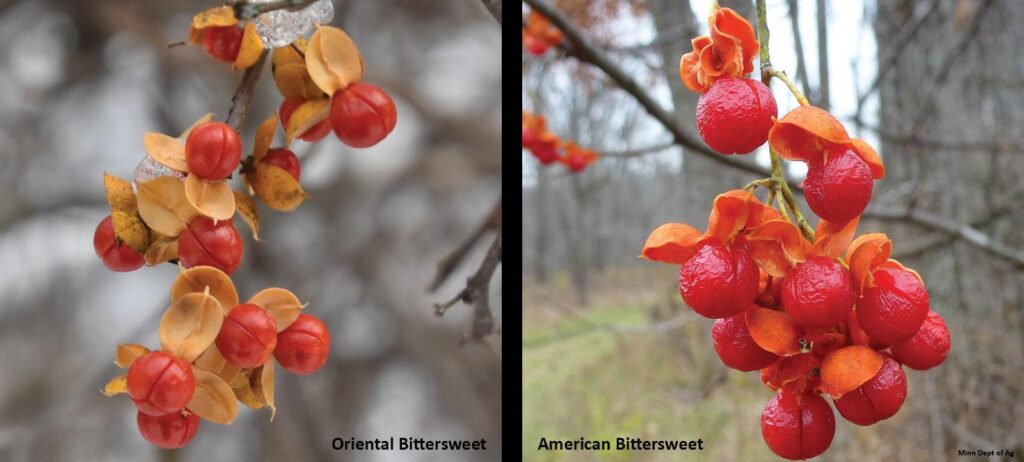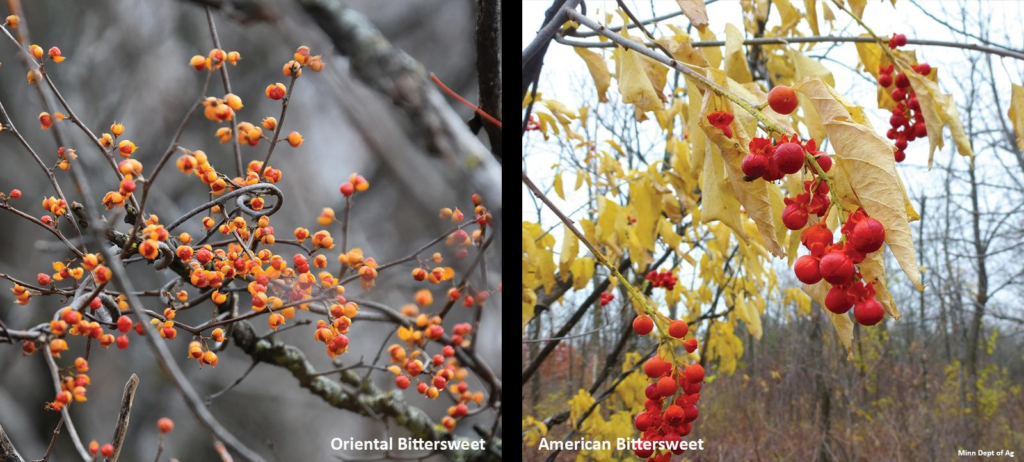Article By: Jaqi Christopher, Invasive plant specialist & Mary Bartkowiak, Invasive plant coordinator
Just as the leaves begin to shift from summer green to the fall shades of gold, orange, red and bronze, the fruits of Oriental bittersweet explode on the scene with their very own show-stopping colors of bright gold and red.
The sight of these vines full of colorful berries may tempt the casual observer to take these berry-filled branches home to use as fall decorations or to plant in their own garden. This, however, would be a mistake, as this striking plant is a serious threat to native ecosystems. Oriental bittersweet is a restricted species under Wisconsin’s Invasive Species Rule NR40. This makes it illegal to transport, transfer or introduce Oriental bittersweet statewide.
Oriental bittersweet is an aggressive-growing woody vine that invades forests, woodlands, fields and hedgerows. The vines twine up trees, smother the crown and girdle trunks with their thick woody stems. In fact, the sheer weight of the vine can cause tree crowns to break and collapse and whole trees to uproot. Additionally, large mats of bittersweet can shade out native plants.

Oriental bittersweet vine girdles tree trunks. Photo Credit: Minnesota Department of Agriculture

Oriental bittersweet vine girdles tree trunks. Photo Credit: University of Illinois’ Chris Evans
This invasive was introduced to the U.S. in the 1860s as an ornamental plant, valued for its quick growing rate, attractive fruits and low-maintenance requirements. It spreads through seed as well as underground root suckers. Birds and humans have facilitated the spread over wider geographical areas. Berry-filled branches are often used as fall and winter decoration, which are then disposed of while seeds are still viable, also leading to further spread.
Despite being regulated in several states, Oriental bittersweet is still widely planted, often accidentally mistaken for the native variety, American Bittersweet. To identify the native versus the invasive bittersweet, look at the flowers and fruit. Oriental bittersweet has flowers all along the stem with red and yellow fruit, while American bittersweet has flowers at the end of each stem with red and orange fruit.


Oriental bittersweet (left) has red and yellow fruit growing all along its stem. American Bittersweet (right) has red and orange fruit that only grow at the end of its stem. Photo Credit: Minnesota Department of Agriculture
American bittersweet is native to eastern and central North America and is common in Wisconsin. It is a great plant for pollinators and birds, and its vibrant berries in the fall are a great alternative to its invasive cousin.
Always be sure to properly identify plants before transporting or planting!
Learn more: https://woodyinvasives.org/woody-invasive-species/oriental-bittersweet/
